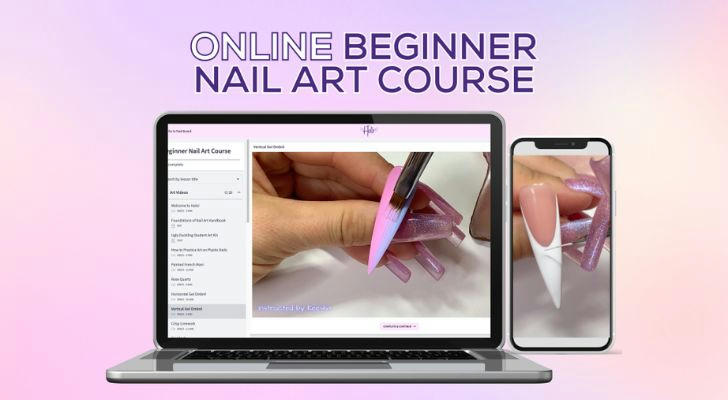Online Nail Courses: What to Look For?
Learning nail care skills online has become a practical option for many aspiring nail technicians, beauty enthusiasts, and creative individuals. With the rise of digital education, there are now hundreds of nail-related courses available on various platforms. However, not all courses offer the same level of instruction, credibility, or usefulness. Knowing what to look for can help learners choose a course that fits their goals and helps them develop solid, safe, and professional skills.

Why Consider an Online Nail Course?
Online nail courses can offer flexibility and convenience. For individuals juggling work, family, or school, these programs can provide structured learning on a manageable schedule. Whether the goal is to eventually work in a salon, offer services at home, or simply improve personal nail care skills, online learning can help build foundational knowledge.
But with so many choices available, it’s important to evaluate each course carefully to ensure it meets quality standards and aligns with personal needs.
Key Features to Look for in an Online Nail Course
1. Clear Course Curriculum
A well-structured curriculum should break down the lessons into modules or units. Common topics include:
- Nail anatomy and health
- Sanitation and hygiene
- Nail shaping and filing techniques
- Polish application
- Gel, acrylic, and dip powder systems
- Nail art basics
- Client consultation and safety
The best courses clearly list what will be taught before enrollment. A missing syllabus or vague description may suggest that the course lacks structure.
2. Instructor Credentials
Course quality often depends on the expertise of the instructor. Look for instructors who:
- Have a valid license or certification in nail technology
- Have salon or teaching experience
- Are recognized in the nail industry or associated with known brands
Some platforms allow learners to view the instructor’s profile. Reading their background, work experience, and teaching history can give insights into their credibility.
3. Practical Demonstrations
High-quality video content is essential in beauty education. A strong course should include:
- Step-by-step demonstrations
- Clear camera angles
- Explanations of tool usage
- Safety tips throughout the process
Without proper visuals, learners may struggle to understand techniques or feel uncertain about the correct methods.
4. Student Feedback and Reviews
Reading other students’ experiences can help in evaluating a course’s effectiveness. Consider reviews that mention:
- Clarity of instruction
- Whether the content matched expectations
- How well the course prepared them for real practice
- Support or communication during the course
Be cautious with reviews that are overly vague or seem repetitive, as these might not be authentic.

What Makes a Course Trustworthy?
Accredited or Recognized Providers
Although online courses don’t always require official accreditation, some platforms partner with schools, industry organizations, or licensed educators. Recognition from beauty schools or professional associations may indicate higher quality.
Transparent Pricing and Policies
A reputable course clearly outlines its total cost, duration, materials needed, and access terms. Avoid courses with hidden fees or unclear return policies. If a course promises unrealistic outcomes, such as immediate certification without practice, it may not be a legitimate option.
Equipment and Product Requirements
Most online nail courses require students to practice with their own tools. A course that provides a list of necessary tools and brands—without upselling—shows planning and attention to learner experience.
Common items needed include:
- Nail files and buffers
- Cuticle pushers
- Nail tips and glue
- Brushes (gel, acrylic, or art)
- LED or UV lamp (for gel courses)
- Sanitizing materials
Understanding what is required before enrolling allows learners to prepare without surprises.
Learning at Home: Expectations vs. Reality
Online nail courses require discipline, space, and the right mindset. Learning from home is different from in-person training, where instructors can give real-time corrections. At home, mistakes might go unnoticed, so courses with quizzes, assignments, or peer feedback can help reinforce learning.
According to a 2023 report by IBISWorld, the U.S. nail salon industry is valued at over $17 billion, and many technicians have started their training through online programs before attending hands-on sessions (source). Still, developing professional-level skills typically involves both theory and in-person practice.
Course Types: Choose Based on Goal
Not every online course serves the same purpose. Below are common types:
- Introductory Courses: Ideal for beginners looking to understand nail basics.
- Technique-Specific Courses: Focus on acrylics, gel extensions, dip powder, or nail art.
- Business-Focused Courses: Teach how to set up and manage a nail business from home or in a salon.
- Test Prep Courses: Designed for those preparing for a state licensing exam (depending on the state requirements).
Before choosing a course, it's important to consider the end goal—whether it's to work professionally, learn for personal use, or prepare for a licensing exam.

Red Flags to Avoid
When browsing online nail courses, pay attention to these warning signs:
- Overly flashy marketing: Courses that rely on lifestyle imagery rather than content previews may be focused more on sales than teaching.
- Lack of contact information: A legitimate course provider typically offers a way to reach out with questions.
- No details about certification: If a course claims to issue a certificate, check if it holds value in the learner's state or region.
- Unrealistic promises: Instant career success or claims of becoming a certified technician “overnight” are not realistic and may violate actual licensing requirements.
How to Compare Multiple Courses
To make a smart decision, consider making a comparison chart based on:
- Topics covered
- Instructor background
- Learning format (video, reading, live sessions)
- Access period (lifetime or limited)
- Platform reputation
- User reviews
Comparing these aspects can highlight which course fits best with an individual’s learning style and expectations.
Final Thoughts
An online nail course can be a valuable step in exploring or advancing nail care skills, but the value depends entirely on the content and teaching quality. By focusing on structure, instructor credibility, and clear expectations, learners can find courses that support both creativity and safe practices.
When chosen carefully, the right course offers more than just technique—it can build confidence and open doors to new opportunities in the beauty industry.
